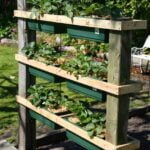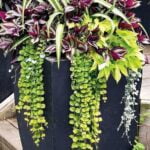Coastal landscapes are a picturesque and serene option for any outdoor space, offering a unique blend of natural beauty and tranquility. Whether you have a small patio or a sprawling backyard, coastal landscape ideas can transform your outdoor area into a paradise inspired by the sea. From incorporating native plants to hardscaping with rocks and water features, there are endless possibilities to create your own coastal oasis.
When it comes to coastal landscapes, the key is to capture the essence of the coastlines around the world, from tropical beaches to rugged cliffs. The beauty of coastal landscapes lies in their ability to evoke a sense of relaxation and escapism, making them perfect for any outdoor space.
In this article, we will explore the elements that make up stunning coastal landscapes, including essential plants and flowers, design tips for creating a paradise, incorporating hardscaping elements such as rocks and water features, as well as construction considerations for paths, decks, and outdoor living spaces in coastal climates.
Whether you have a small balcony or a large backyard overlooking the ocean, we will provide inspiration and ideas to help you embrace the serenity of coastal landscapes in your own outdoor space.
Finding Inspiration
When it comes to coastal landscape ideas, finding inspiration is key to creating a stunning outdoor space that captures the beauty of the sea and its surroundings. Exploring coastal landscapes around the world can provide a wealth of ideas for your own outdoor paradise. From the rocky shores of Maine to the sandy beaches of Hawaii, coastal landscapes offer a diverse range of natural elements that can be incorporated into your own design.
To get inspired by coastal landscapes around the world, consider visiting some iconic beach destinations such as:
- The Amalfi Coast in Italy
- The Great Ocean Road in Australia
- The Cliffs of Moher in Ireland
- The Seychelles in Africa
These locations offer unique characteristics that can influence your own coastal landscape design. Whether it’s the rugged cliffs and crashing waves or the palm trees and white sands, each destination provides inspiration for creating your own slice of seaside paradise at home.
In addition to physically visiting different coastal landscapes, you can also seek inspiration from travel blogs, magazines, and social media platforms where people share their experiences and photos of various coastal environments. By immersing yourself in these beautiful settings, you can gather ideas for plants, colors, textures, and hardscaping elements that will bring a touch of coastal magic to your own outdoor space.
Essential Elements
Coastal landscapes are known for their unique beauty and serene ambiance, making them a popular choice for homeowners looking to create a calming and picturesque outdoor space. When designing a coastal landscape, one of the essential elements to consider is the selection of plants and flowers that thrive in this environment.
Whether you live near the coast or simply want to recreate the coastal aesthetic in your backyard, incorporating the right flora can enhance the overall appeal of your outdoor space.
To create a stunning coastal landscape, it’s important to choose plants and flowers that can withstand salty sea air, strong winds, and sandy soil. Here are some essential elements to consider when selecting plants and flowers for your coastal landscape:
- Salt-Tolerant Plants: Choose species that can tolerate salt spray from the ocean such as beach grasses, seaside goldenrod, yucca, and bayberry.
- Drought-Resistant Flowers: Opt for flowers that can thrive in sandy soil and are capable of withstanding dry and windy conditions such as lavender, lantana, gazania, and sea thrift.
- Native Plant Species: Incorporating native plant species into your coastal landscape can help support the local ecosystem while also ensuring that the plants are well adapted to the climate and conditions of the area.
By carefully selecting plants and flowers that are well-suited for coastal environments, you can create a vibrant and sustainable landscape that embraces the natural beauty of coastal regions while requiring minimal maintenance.
In addition to choosing the right plants and flowers for your coastal landscape, it’s important to consider creating layers of vegetation to add depth and texture to your outdoor space. Mixing different plant heights and textures can mimic the natural diversity found along coastlines, enhancing the visual interest of your coastal landscape design. With these essential elements in mind, you can create a breathtaking coastal landscape that flourishes in its seaside surroundings.
Design Tips
Color Palette and Texture
When creating a coastal landscape, it’s important to consider the color palette and texture of the plants and hardscaping elements. Opt for a color scheme that reflects the natural beauty of the coast, such as shades of blue, green, white, and sandy beige. Incorporate different textures by using a mix of grasses, succulents, and flowering plants to mimic the diverse flora found in coastal regions.
Focal Points and Views
To enhance the visual appeal of your coastal landscape, consider incorporating focal points and captivating views. Whether it’s a strategically placed seating area overlooking the ocean or a statement piece like a driftwood sculpture or water feature, creating focal points will draw attention and add interest to your outdoor space.
Sustainable Design Practices
Incorporating sustainable design practices is crucial when planning your coastal landscape. Choose native plants that are adapted to the coastal climate, as they require less maintenance and water. Additionally, consider using permeable materials for pathways and driveways to reduce runoff and erosion. By implementing sustainable design practices, you can create a picturesque coastal landscape while minimizing its environmental impact.
By following these design tips for creating a coastal landscape paradise, you can transform your outdoor space into a serene retreat that embraces the natural beauty of coastal regions. With careful consideration of color palettes, textures, focal points, views, and sustainable design practices, you can create a stunning coastal landscape that brings the tranquility of the coast right to your doorstep.
Coastal Hardscaping
When it comes to coastal landscape ideas, incorporating hardscaping elements such as rocks, sand, and water features can truly enhance the beauty and serenity of the outdoor space. These elements not only add visual interest but also contribute to the overall ambiance and feel of a coastal landscape paradise.
Rocks are an essential hardscaping element for coastal landscapes, as they provide a natural and rugged aesthetic that complements the surrounding environment. By strategically placing rocks of varying sizes and shapes, you can create visual focal points, define garden beds, or even build retaining walls to prevent erosion in coastal areas.
Additionally, incorporating sand into your coastal landscape design can evoke a sense of being at the beach, especially when used in conjunction with other elements such as driftwood or beach grass.
Water features are another key component of coastal hardscaping, adding a soothing and tranquil aspect to the outdoor space. Whether it’s a small pond, a cascading waterfall, or a meandering stream, the sight and sound of water can enhance the overall sensory experience of your coastal landscape. Water features also attract wildlife such as birds and butterflies, adding another layer of natural beauty to your outdoor paradise.
Incorporating rocks, sand, and water features into your coastal landscape design not only adds visual appeal but also creates an immersive experience that allows you to fully embrace the serenity of coastal living. Whether you have a small garden or a large backyard overlooking the ocean, these hardscaping elements can be tailored to suit your space and personal style while enhancing the natural beauty of the coastal environment.
Considerations for Coastal Climates
When designing a coastal landscape, it’s essential to consider the unique challenges and opportunities presented by the coastal climate. From salt spray to strong winds, coastal landscapes require special maintenance and sustainable practices to thrive in this environment. Here are some considerations for maintaining and sustaining a beautiful coastal landscape.
Choosing Salt-Tolerant Plants
One of the biggest challenges of coastal landscaping is dealing with salt spray. Salt-tolerant plants are essential for creating a thriving coastal garden. Look for plants such as beach grass, sea thrift, and yarrow, which can withstand the salt and wind common in coastal areas. These plants not only add beauty to your landscape but also help stabilize soil along the coast.
Water Management
Coastal landscapes often have unique water management needs due to high winds and sandy soils. Consider incorporating features such as rain gardens and swales to capture and filter rainwater while preventing erosion. Additionally, using drought-resistant plants can help reduce the need for irrigation while still maintaining a lush landscape.
Sustainable Maintenance Practices
In a coastal setting, sustainable maintenance practices are crucial for preserving the natural beauty of the area. Avoid using chemical fertilizers and pesticides that can run off into nearby water sources. Instead, opt for organic fertilizers and natural pest control methods to keep your coastal landscape healthy while minimizing environmental impact.
By carefully considering these factors when planning and maintaining your coastal landscape, you can create a beautiful outdoor space that thrives in its unique environment while contributing to the sustainability of the surrounding ecosystem. Coastal landscapes offer endless opportunities for creativity and serenity, making them an ideal choice for any outdoor space near the coast.
Coastal Landscape Construction
When it comes to coastal landscape ideas, incorporating paths, decks, and outdoor living spaces can truly elevate the beauty and functionality of your outdoor area. The right construction elements can help you make the most of your coastal surroundings while creating a serene and enjoyable environment for relaxation and entertaining.
One key consideration when constructing paths in a coastal landscape is using materials that can withstand the unique challenges posed by coastal climates. This includes resistance to erosion from wind and saltwater exposure. Options such as gravel, crushed shell, or permeable pavers are ideal for coastal paths due to their ability to allow water to drain through and minimize runoff.
In addition to paths, decks are another important aspect of coastal landscape construction. Whether overlooking the ocean or nestled among sand dunes, a well-designed deck can provide a perfect spot for enjoying the coastal views.
When building a deck in a coastal area, it’s crucial to use materials that can withstand exposure to salt air and humidity. For example, tropical hardwoods like teak or composite decking made from recycled materials are excellent choices for durability and low maintenance in coastal environments.
| Construction Element | Ideal Material |
|---|---|
| Paths | Gravel, crushed shell, permeable pavers |
| Decks | Tropical hardwoods (teak) or composite decking |
Lastly, outdoor living spaces such as patios or seating areas should be carefully planned and constructed to ensure they complement the natural beauty of the surrounding coastal landscape. Using materials that blend seamlessly with the environment – such as natural stone or weather-resistant wicker furniture – can add warmth and comfort to these areas while withstanding the rigors of a coastal climate.
By thoughtfully planning and constructing paths, decks, and outdoor living spaces within a coastal landscape, you can create an inviting oasis where you can fully appreciate the tranquility of your seaside setting.
Bringing It All Together
Creating a beautiful coastal landscape for small or large spaces requires careful planning, thoughtful design, and attention to detail. Whether you have a tiny backyard or an expansive seaside property, there are countless ways to incorporate the natural beauty of the coast into your outdoor space.
One of the key coastal landscape ideas for small spaces is to maximize the use of vertical elements. Utilizing trellises, hanging plants, and vertical gardens can help create a sense of depth and visual interest in a limited area. Additionally, choosing smaller, compact plant varieties and carefully selecting furniture and decor can make the most of a smaller coastal landscape.
For larger coastal spaces, consider creating distinct “zones” within your landscape. This could include designated areas for dining, lounging, gardening, or enjoying water features. By creating separate areas with different purposes, you can make the most of your expansive coastal landscape without it feeling overwhelming.
No matter the size of your outdoor space, incorporating natural elements such as driftwood, shells, and coastal grasses can help bring the beauty of the beach to your own backyard. By carefully selecting plants that thrive in coastal climates and paying attention to design details like color palettes and textures, you can create a serene and inviting coastal landscape retreat right at home.
| Coastal Landscape Ideas for Small Spaces | Coastal Landscape Ideas for Large Spaces |
|---|---|
| Maximize vertical elements | Create distinct “zones” within the landscape |
| Choose compact plant varieties | Incorporate natural elements such as driftwood and shells |
| Carefully select furniture and decor | Select plants that thrive in coastal climates |
Conclusion
In conclusion, coastal landscapes offer a serene and calming environment that can be easily incorporated into any outdoor space. The beauty of coastal landscapes lies in the natural elements such as rocks, sand, water features, and the abundant variety of plants and flowers that thrive in this environment. By exploring coastal landscapes around the world, homeowners and landscape designers can find inspiration to create their own coastal paradise.
When considering coastal landscape ideas for small or large spaces, it’s important to focus on essential elements such as native plants, hardscaping with natural materials like rocks and sand, and incorporating water features. Design tips should include creating a sense of natural flow and embracing the organic shapes and textures found in coastal environments. Additionally, constructing paths, decks, and outdoor living spaces that seamlessly blend into the surrounding landscape will enhance the overall appeal of the space.
Maintenance and sustainability are also crucial considerations for coastal landscapes. Choosing native plants that are well adapted to the local climate can reduce water consumption and overall maintenance needs. Embracing the serenity of coastal landscapes means creating an environment that is not only visually appealing but also harmonious with nature’s rhythm.
With careful planning and design, homeowners can bring a slice of coastal paradise into their own backyard, no matter where they are located. Coastal landscape ideas offer endless opportunities for creating an outdoor retreat that embodies tranquility and natural beauty.
Frequently Asked Questions
What Is Coastal Style Landscaping?
Coastal style landscaping refers to the design and implementation of outdoor spaces that are specifically tailored to the unique environmental conditions found in coastal areas. This type of landscaping often incorporates elements such as salt-tolerant plants, erosion control measures, and sustainable irrigation systems to thrive in coastal environments.
What Is the Landscape of the Coastal Area?
The landscape of a coastal area typically includes a mix of sand dunes, beach grasses, rocky shorelines, and ocean views. Coastal landscapes are heavily influenced by the proximity to the sea, which can affect plant life, soil composition, and overall ecosystem dynamics. The landscape also often reflects the maritime culture of the area, with nautical themes and seaside color palettes.
What Does Landscape Include?
A coastal landscape includes a wide range of elements such as vegetation, topography, water features, and human-made structures. It encompasses natural features like beaches, cliffs, marshes, and estuaries as well as man-made elements like beachfront homes or boardwalks. Additionally, a coastal landscape may include activities such as fishing or boating that are central to life in these areas.

Welcome to my gardening blog! I am passionate about plants and enjoy sharing my knowledge and experiences with others. In this blog, I will write about everything related to gardening, from tips on how to get started to updates on my own garden projects.





